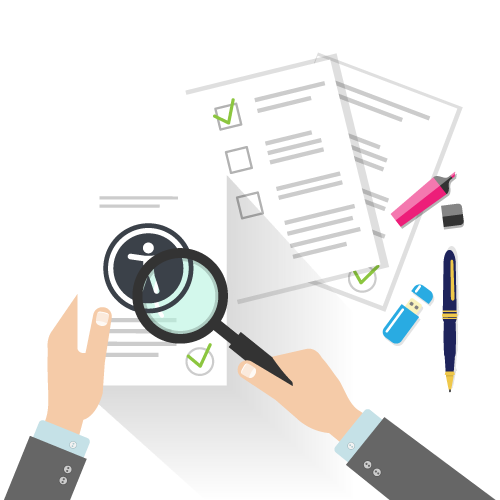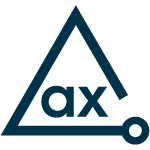The Americans with Disabilities Act (ADA) & Web Accessibility
The ADA is a law established to protect the rights of people with disabilities including their right to employment, public services, and public accommodations.
What is the ADA?
The Americans with Disabilities Act (ADA) is a civil rights and equal opportunity law prohibiting discrimination against people with disabilities.
The ADA was signed into law in 1990, long before the Internet became the center of shopping, social networking, information sharing, education, work, and life as we know it. And wow, a whole lot has changed in the last 30 years.
1990 The ADA passed
2008 ADA Amendments Act (ADAAA) signed
2024 The US Department of Justice issues WCAG 2.1 A/AA mandate under ADA Title II
Who does the ADA protect and what does it cover?
The ADA protects qualified individuals with disabilities, whether temporary or permanent. According to the ADA website, a person with a disability is someone who:
- has a physical or mental impairment that substantially limits one or more major life activities,
- has a history or record of such an impairment (ex. cancer that is in remission), or
- is perceived by others as having an impairment (ex. a person who has scars from a severe burn).
ADA regulation does not list every single disability. Examples of protected disabilities include:
- Autism
- Blindness or low vision
- Cancer
- Cerebral palsy
- Deafness or hearing loss
- Epilepsy
- Intellectual disabilities
- Mobile disabilities
- Traumatic brain injury
- And many more
The Americans with Disabilities Act is made up of five different sections (or titles) for organizations in the United States to follow
According to the ADA’s government website, this includes:
“Employers must provide people with disabilities equal opportunities like recruitment, hiring, training, pay, and more.”
“State and local governments must provide people with disabilities equal opportunities to benefit from their programs and services.” Learn more about ADA Title II deadlines.
“Businesses and nonprofits must provide people with disabilities equal opportunities to access the goods or services they offer. This includes restaurants, hotels, stores, theaters, schools, offices, hospitals, gyms, transportation, and more.”
“Telephone companies must provide services that allow people with hearing and speech disabilities to communicate.”
This title supports people with disabilities who need legal protection and prevents retaliation against individuals who exercise their rights under the ADA.
How does the ADA apply to web accessibility today?
Even though the civil rights law was established long before the rise of E-commerce, courts interpret Title III (Public accommodations: Private entities) as applying to web-based content and services.”
Since the early 2000s, the U.S. Department of Justice (DOJ) has openly declared that ADA compliance includes access to websites that provide services, public accommodations, and/or other functions outlined in the Act.
As a result, more and more accessibility lawsuits are being filed each year. Data from law firm Seyfarth Shaw shows that “more than 11,400 people filed an ADA Title III lawsuit in 2021—a 4 percent increase from 2020 and a 320 percent increase since 2013.”
Want to avoid getting hit with an ADA lawsuit? If your organization does business or offers public accommodations online, it must provide equal access to goods, services, and resources for all.
Are you ready for the ADA Title II deadline?
The U.S. Department of Justice’s new mandate requires all state and local governments, along with their third-party contractors and software vendors, to comply with the digital accessibility standard WCAG 2.1 A/AA standards in as little as two years.

What is the difference between ADA, Section 508, and WCAG?
Great question. There’s a lot of information out there, and we know it’s easy to get lost in all of the legal jargon. Although we’re not lawyers, we have extensive experience with website and ADA compliance. We’re here to help walk you through the regulations and requirements that US-based organizations are likely to run into on their accessibility journey.
Civil Rights Law ADA
Federal Law Section 508
Widely-adopted guidelines WCAG
How does the ADA define compliance?
The short answer: Let WCAG 2.1 A/AA be your guide.
The ADA now mandates WCAG 2.1 A/AA as the criteria for measuring digital accessibility for Title II. And the US DOJ has issued numerous consent decrees and settlement agreements related to Title III requiring WCAG 2.1 A/AA. The DOJ has also published updated guidance on web accessibility, referencing WCAG as the standard.
WCAG is the way to go.
What does success look like? The “levels of conformance” are broken down into three stages:
- A (basic conformance): Required
- AA (intermediate conformance): Required
- AAA (advanced conformance): Optional/Best practice

How Deque can help
Free consultation
Not sure where to start? Request a free consultation to get expert guidance.
Contact UsAudit
Most accessibility projects begin and end with an audit – they assess the current state of your site or application’s accessibility resulting in a clear accessibility report.
Request AuditRemediation
Getting help from our team of experts will ensure your accessibility fixes will meet your compliance requirements as quickly and effectively as possible.
Contact UsAxe testing tools
The axe DevTools, axe Auditor and axe Monitor products enable accessibility experts and development to test and maintain accessibility end-to-end.
See Tools